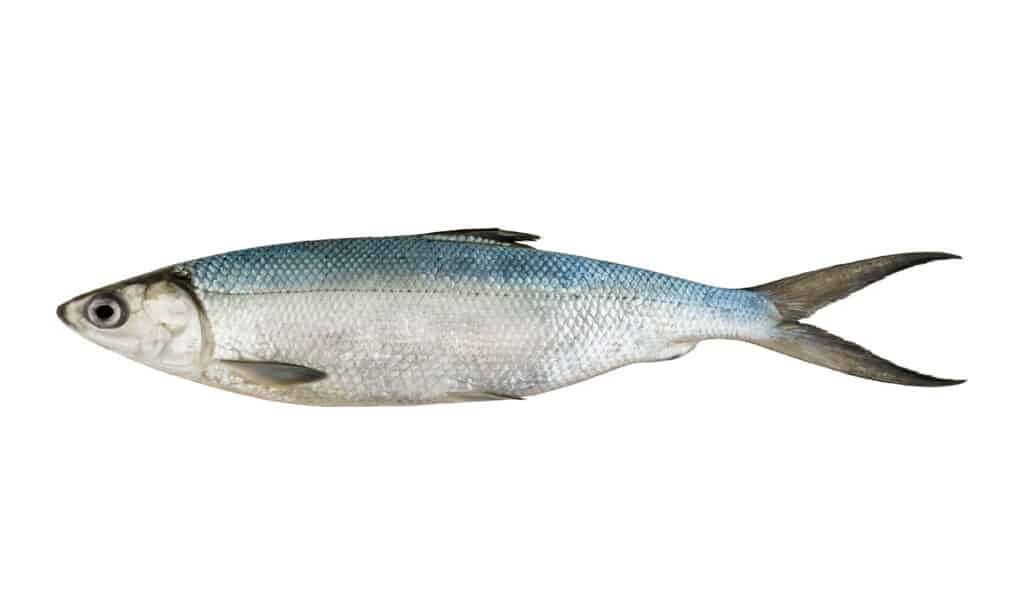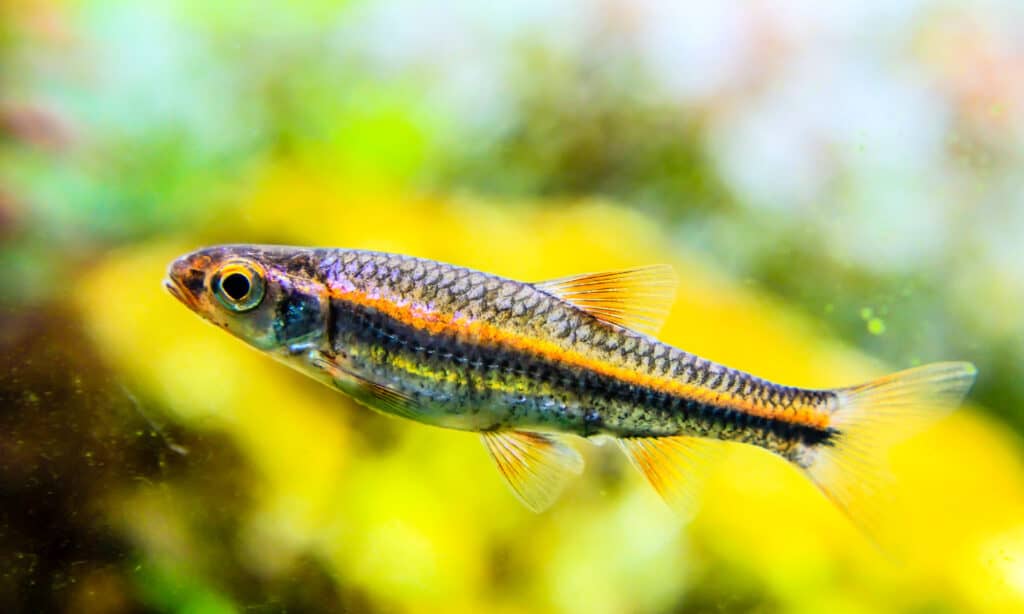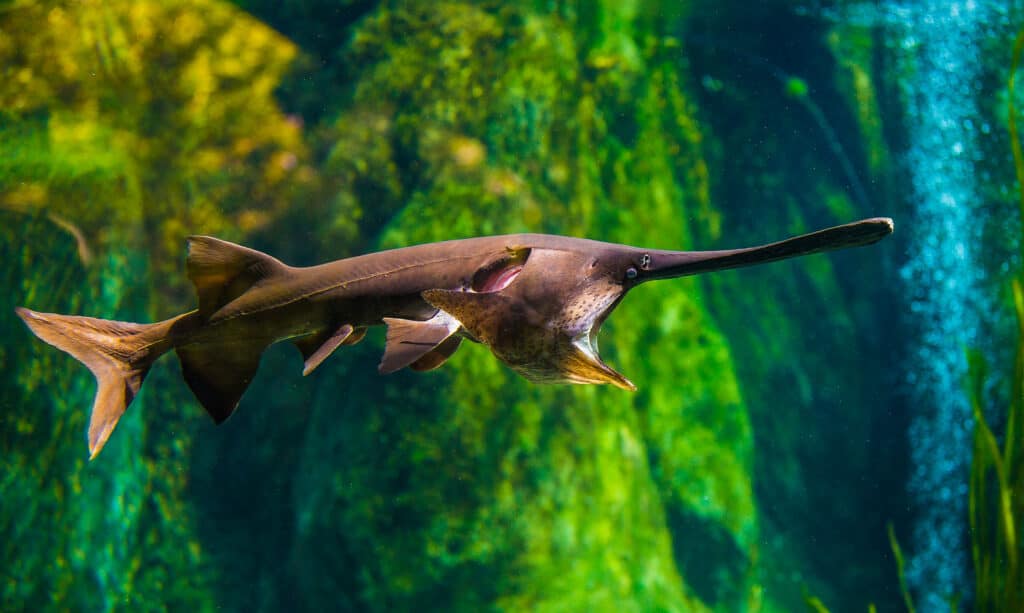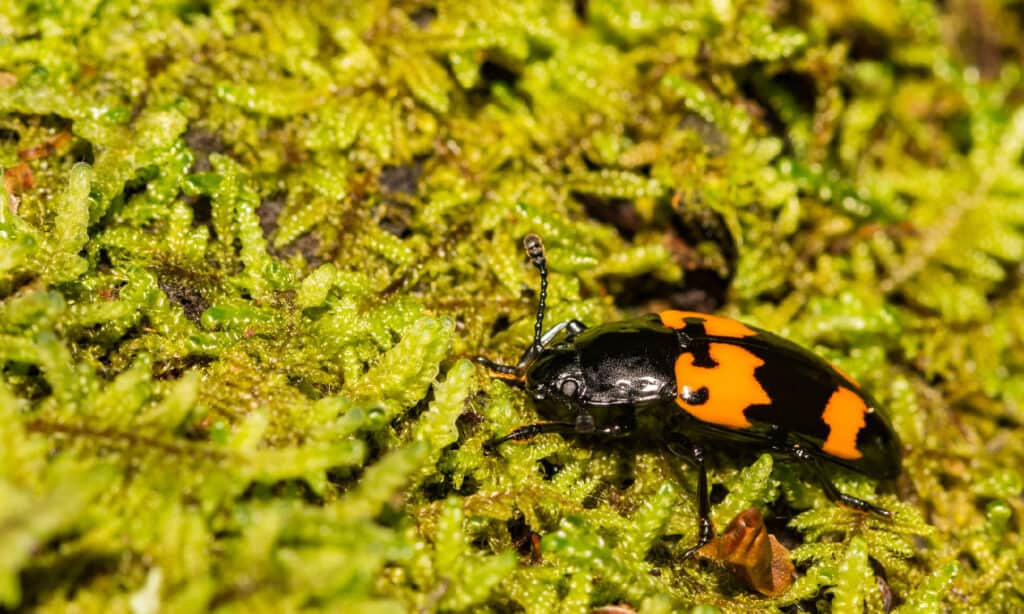Michigan is the 10th most populous state located in the Great Lakes region of North America. The unique geographical arrangement of Michigan consists of two peninsulas connected by Mackinac Bridge. Michigan is often called the “Great Lakes State” or unofficially “The Wolverine State.” However, some studies question its accuracy because wolverines were barely mentioned in Michigan history. Wolverines are carnivorous mammals that feed on other mammals, rodents, and leftover carrion.
Wildlife in Michigan thrives in its 74 state parks, two national parks, and numerous lakes, waterfalls, forests, and historical sites. Other interesting animals found in Michigan are cougars, coyotes, foxes, river otters, bears, and even gray wolves. The state is also abundant with hundreds of species of freshwater fish. Unfortunately, some of these animals are declared extirpated by the Michigan Department of Natural Resources.
Here are 5 extinct animals that used to live in Michigan:
1. Lark sparrow (Chondestes grammacus)

The lark sparrow is a distinctive bird from the Passerellidae family.
©iStock.com/Nancy Strohm
| Lark sparrow (Chondestes grammacus) | |
|---|---|
| Kingdom | Animalia |
| Phylum | Chordata |
| Class | Aves |
| Order | Passeriformes |
| Family | Passerellidae |
| Genus | Chondestes |
| Species | Chondestes grammacus |
Lark sparrows are distinctive birds from the Passerellidae family. They are known for their brown or gray color and cone-shaped bills used for cracking seeds, which is their primary diet.
Although the lark sparrow is declared a species of least concern in other parts of America, the State of Michigan declared the lark sparrow extirpated in 2009. Its last reported occurrence was in 2016 in Lenawee County.
2. Cisco (Coregonus)

Deepwater cisco is a freshwater fish that feeds primarily on plankton.
©Good luck images/Shutterstock.com
| Cisco (Coregonus) | |
|---|---|
| Kingdom | Animalia |
| Phylum | Chordata |
| Class | Actinopterygii |
| Order | Salmoniformes |
| Family | Salmonidae |
| Subfamily | Coregoninae |
| Genus | Coregonus |
| Species found in Michigan | Coregonus artedi (Lake herring or cisco) Coregonus hoyi (Bloater) Coregonus johannae (Deepwater cisco) Coregonus kiyi (Kiyi) Coregonus nigripinnis (Blackfin cisco) Coregonus reighardi (Shortnose cisco) Coregonus zenithicus (Shortjaw cisco) |
| Extirpated since | 1970 |
Deepwater cisco is a freshwater fish that feeds primarily on plankton. Cisco adults can reach lengths of 9 to 12 inches (22.86 to 30.48 cm). Its scientific name is Coregonus, which means “angle-eye.” Coregonus inhabits lakes and rivers and it belongs to the Salmonidae family along with salmon and trout.
There are at least 68 species of the Coregonus genus found all over the world. According to a study in 1930, seven identified Coregonus species were found in Lake Michigan, but by 1970, six species were extirpated. The leading causes of their population decline were habitat loss, overfishing, and adverse interactions with invasive species like sea lamprey and alewife. Out of the seven species of Coregonus found in Michigan, the only species left was Coregonus hoyi, commonly called bloater. More recent studies in 2019 reported the resurgence of Coregonus artedi.
The bigeye chub, scientifically called Hybopsis amblops, is a freshwater fish that lives in the US. It is typically found in sandy wetlands or silty soil in creeks or rivers with moderate water currents. It feeds on larvae, mayflies, and nymphs.
The bigeye chub is presumed extirpated in Michigan and declared endangered in other parts of the Great Lakes region in North America.
3. Shiner (Notropis)

The ironcolor shiner is a freshwater fish commonly found in clear, vegetated, sand-bottomed pools of creeks and small rivers.
©chonlasub woravichan/Shutterstock.com
| Shiner (Notropis) | |
|---|---|
| Kingdom | Animalia |
| Phylum | Chordata |
| Class | Actinopterygii |
| Order | Cypriniformes |
| Family | Leuciscidae |
| Subfamily | Pogonichthyinae |
| Genus | Notropis |
| Species | Notropis chalybaeus (Ironcolor shiner) Notropis texanus (Weed shiner) |
The ironcolor shiner, scientifically called Notropis chalybaeus, is a freshwater fish commonly found in clear, vegetated, sand-bottomed pools of creeks and small rivers. It feeds mainly on small crustaceans, insects, and algae.
The weed shiner, scientifically called Notropis texanus, inhabits sandy pools in the lowlands of the Great Lakes, Hudson Bay (Red River), and Mississippi River. It feeds on filamentous algae and detritus.
In Michigan, the ironcolor shiner (Notropis chalybaeus) and weed shiner (Notropis texanus) are extirpated, but they may exist in other states.
4. Paddlefish (Polyodon spathula)

The paddlefish is a freshwater fish known for its elongated snout.
©Saran Jantraurai/Shutterstock.com
| Paddlefish (Polyodon spathula) | |
|---|---|
| Kingdom | Animalia |
| Phylum | Chordata |
| Class | Actinopterygii |
| Order | Acipenseriformes |
| Family | Polyodontidae |
| Genus | Polyodon |
| Species | Polyodon spathula |
The paddlefish, scientifically known as Polyodon spathula, is a freshwater fish known for its elongated snout. Its shape is similar to a canoe paddle, and its gills are covered with a large, fleshy, pointed flap, hence the name. Formerly inhabiting the Great Lakes Basin, the last known occurrence of this species was not recorded. That’s why Michigan declared it extirpated, although it might still be found in other states of America.
5. American burying beetle (Nicrophorus americanus)

The American Burying Beetle is commonly known as the giant carrion beetle because it feeds and breeds on carrion.
©iStock.com/JasonOndreicka
| American burying beetle (Nicrophorus americanus) | |
|---|---|
| Kingdom | Animalia |
| Phylum | Arthropoda |
| Class | Insecta |
| Order | Coleoptera |
| Family | Silphidae |
| Genus | Nicrophorus |
| Species | Nicrophorus americanus |
The American burying beetle, scientifically called Nicrophorus americanus, was described by the U.S. Fish and Wildlife Service as a shiny black beetle with two orange marks on its dorsal plate behind the head. It is also commonly known as the giant carrion beetle because it feeds and breeds on carrion.
The American burying beetle is presumed to be extirpated in Michigan. Its last recorded occurrence was in Kalamazoo County, Michigan, in 1961. However, the latest studies reported the occurrence of the species in Muskegon in 2017.
The photo featured at the top of this post is © iStock.com/JasonOndreicka
Thank you for reading! Have some feedback for us? Contact the AZ Animals editorial team.






